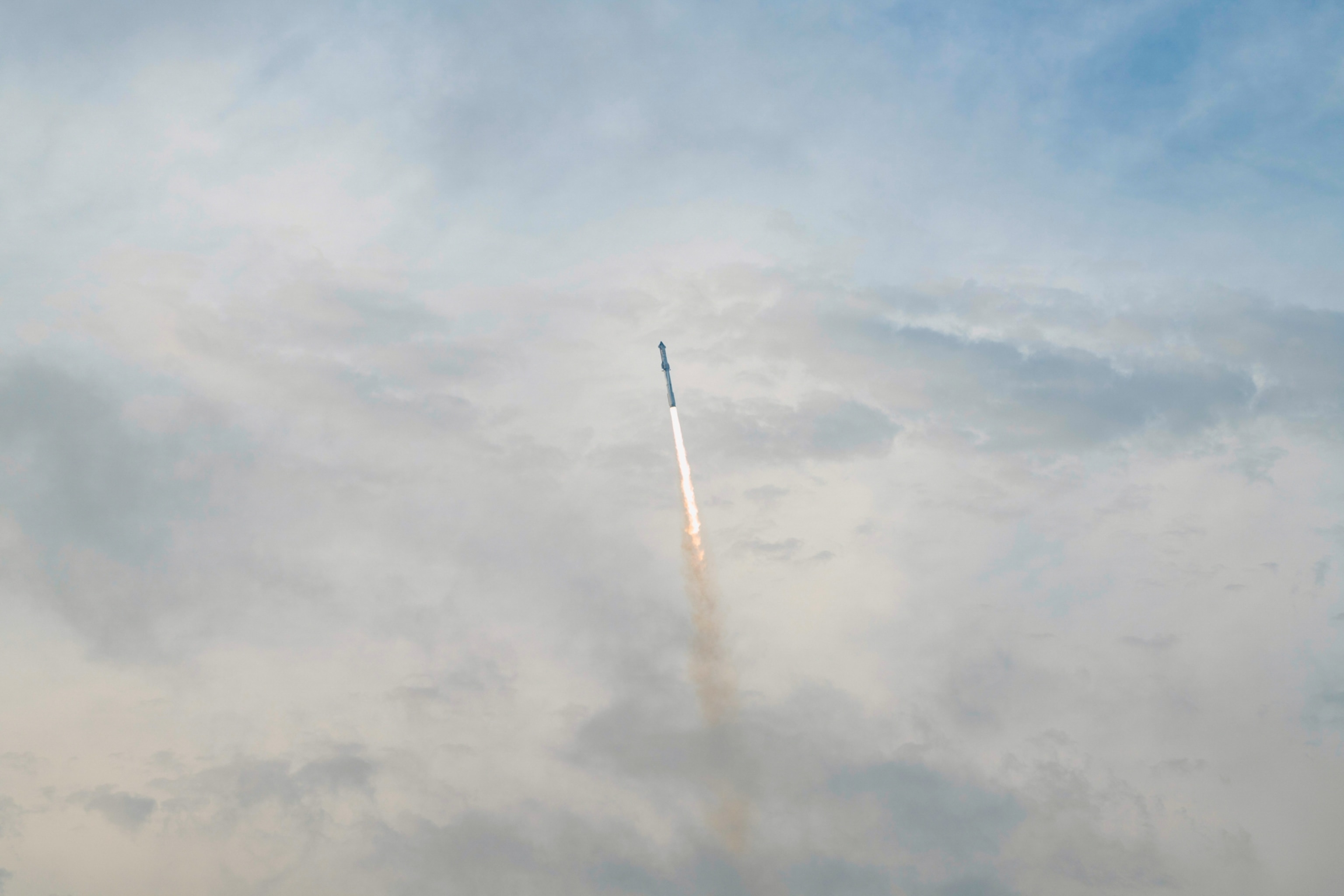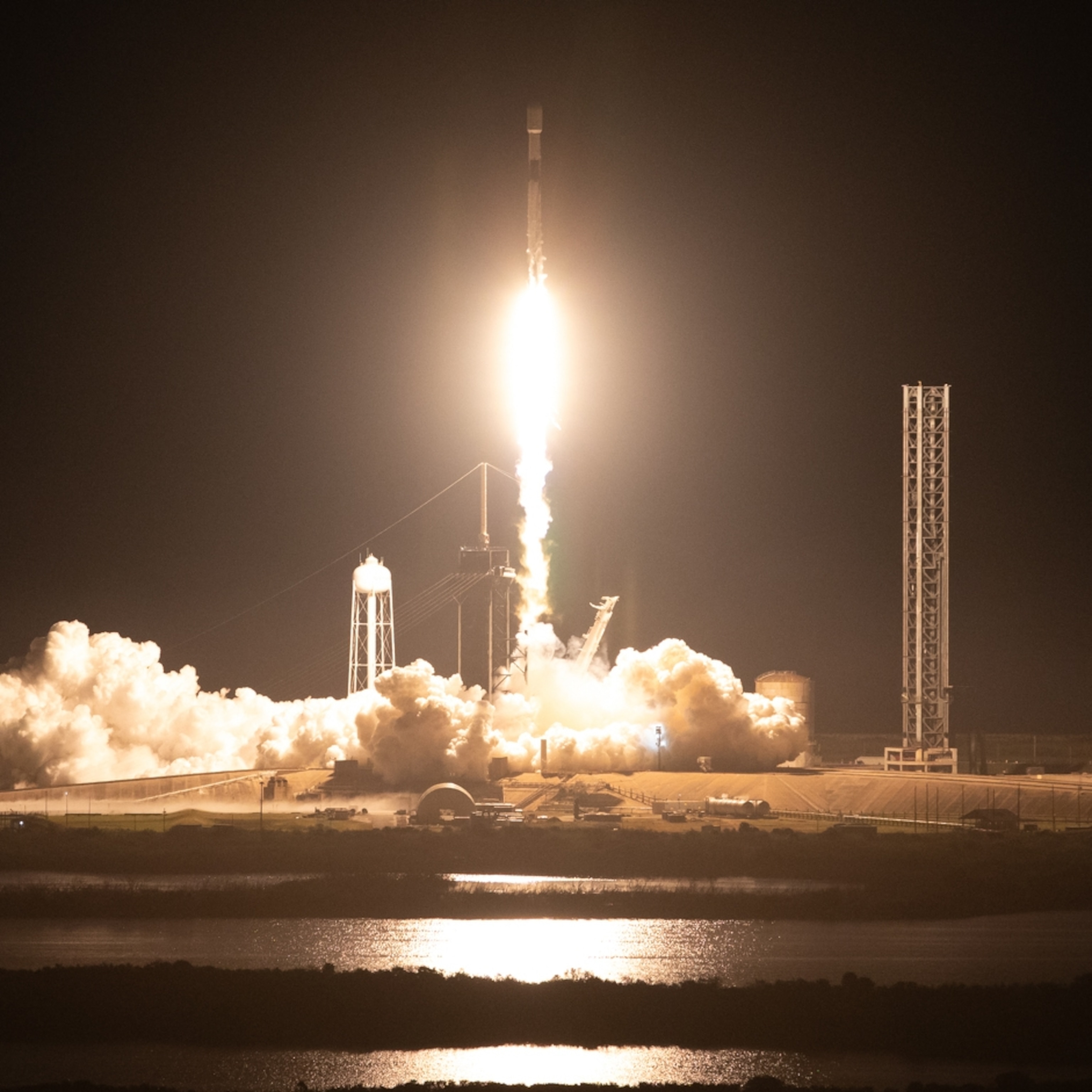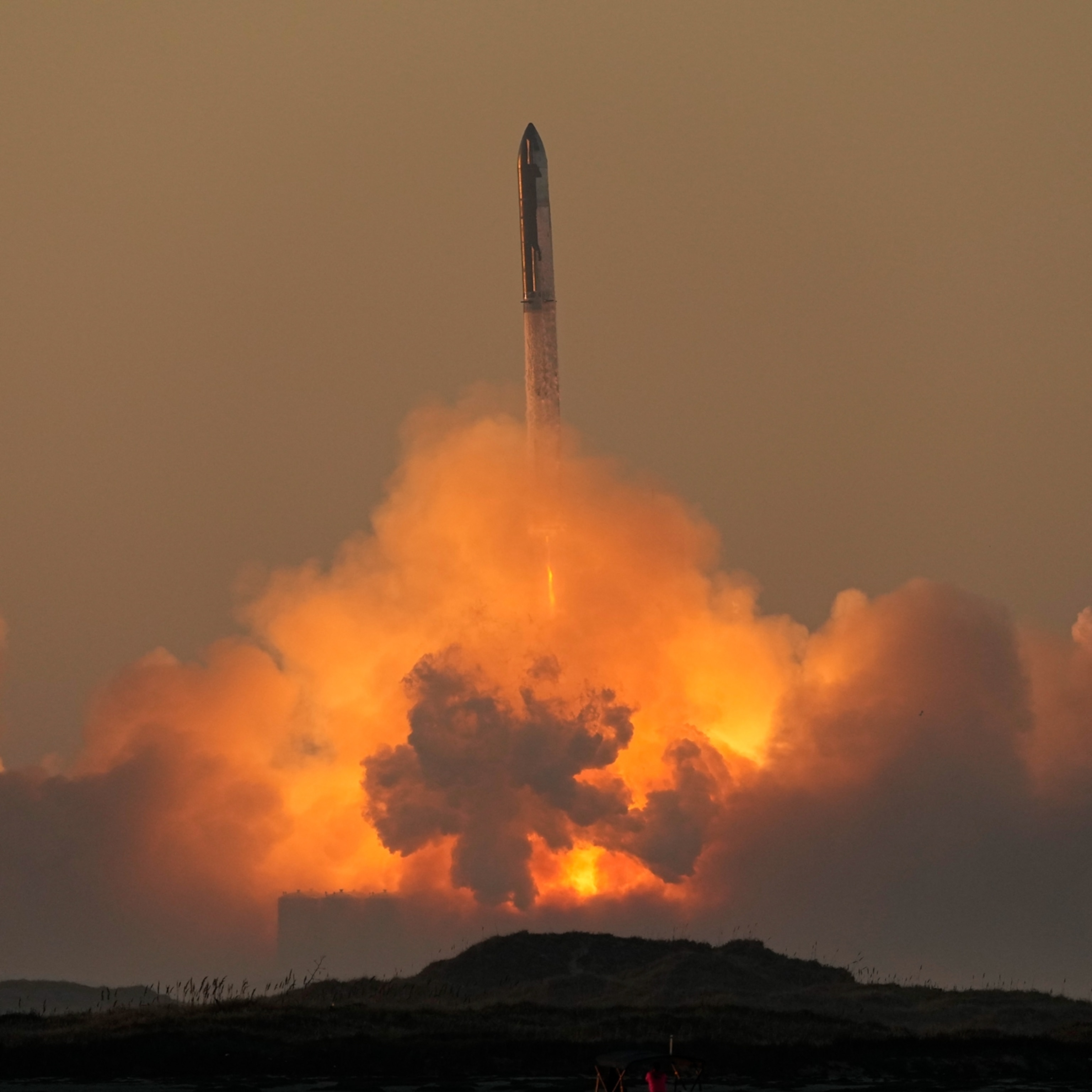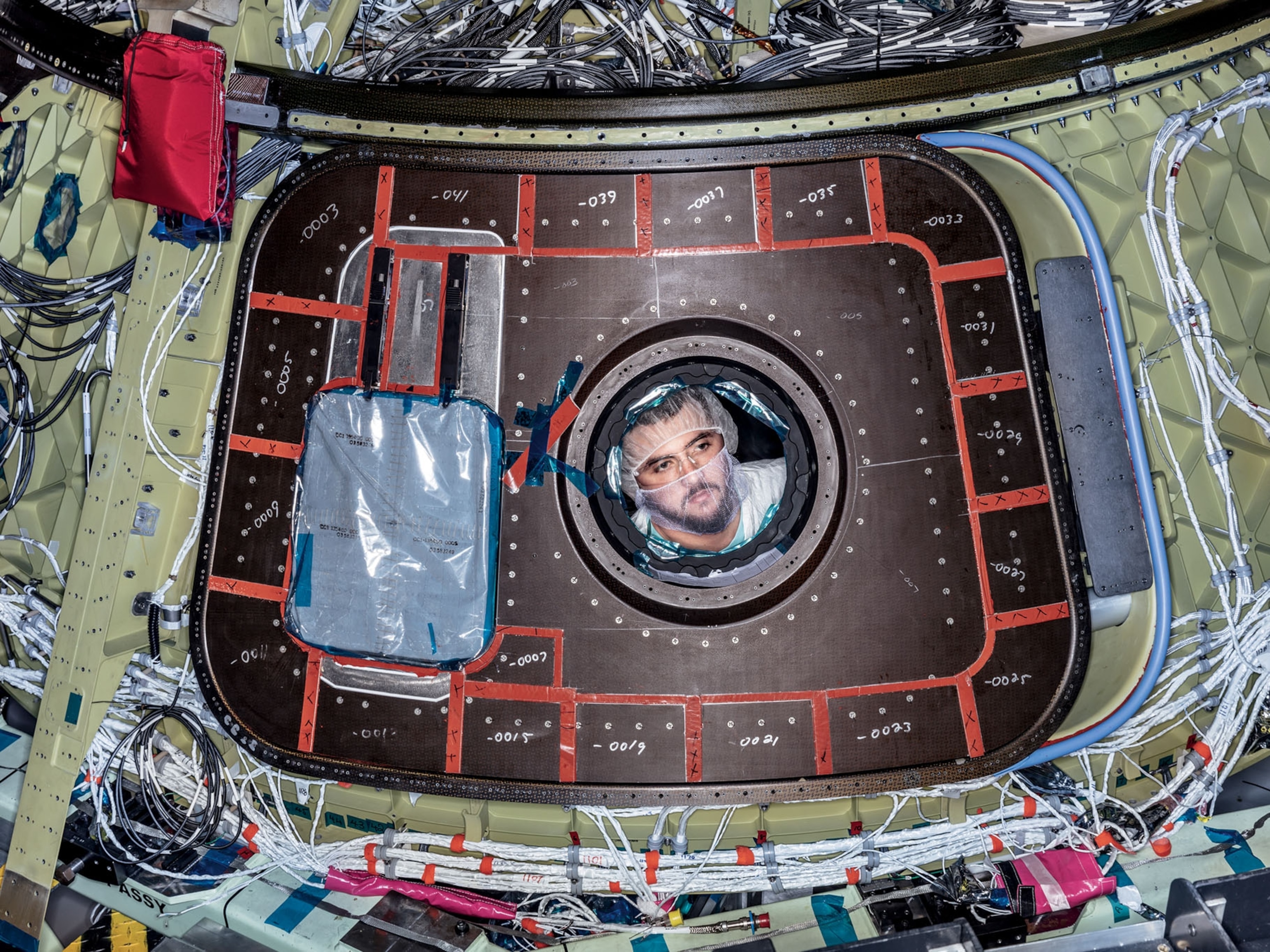SpaceX ship reaches space but ends in fireball
Starship soared into space but failed to survive the trip home, making a halting step forward in SpaceX’s goal to deliver NASA astronauts to the moon.

In an early morning launch of the world’s largest rocket, SpaceX for the first time flew its Starship to space and saw it return to Earth, albeit in pieces.
The uncrewed spacecraft took off this morning from SpaceX’s Starbase in Boca Chica, Texas. The 165-foot-long Starship, meant to one day land NASA astronauts on the Moon, separated from the depleted fuel tank, called a booster, and arced southeast into space.
After clearing Africa’s east coast, Starship began its descent, creasing through the atmosphere at five times the speed of sound, generating a sheath of superheated plasma that would crisp the spacecraft without its protective heat tiles.
The spacecraft reached space but was not aimed to reach orbit, so no engine burn was needed to return to earth and land on target. (SpaceX called off just such test while today’s flight progressed.) The spacecraft used its small wings, called “gridfins,” to steer at hypersonic speeds, something that cameras onboard Starship captured just before SpaceX mission control lost the signal.
Starship didn’t survive reentry to make its expected belly-flop landing on the surface of the Indian Ocean. SpaceX called it “a pretty successful day.”
This was Starship’s third test flight, and easily the most significant. Their livestream reached 3.7 million viewers. “Starship reached orbital velocity!” company founder Elon Musk wrote on his social media platform, X, while Starship cruised over the planet. “Congratulations SpaceX team!”

Flying fuel tanks
Plans to land the booster softy in the Gulf didn’t go as planned. As the spacecraft soared away, the 233-foot-tall booster successfully fired 13 of its engines for a minute to reorient itself for a planned soft water landing in the Gulf of Mexico. Future ambitions aim these empty boosters at the launchpad itself for these landings, saving time between their reuse.
Today’s schedule called for the engines to ignite just before touchdown to softly lower the upright rocket into the water, but the onboard cameras wheeled shortly after ignition and the signal was quickly severed. SpaceX confirmed that the booster was lost, but acknowledged the wealth of data gathered because it survived longer than previous tests.
During its coast through space, Starship pumped 11 tons of supercooled liquid oxygen between two interior tanks, a tantalizing test of a system that will one day transfer propellant between two Starships in orbit.
Without this ability, Starship would not be able to travel to the moon, where it would transport NASA astronauts to the lunar surface during NASA’s Artemis III mission, which would establish a human settlement on the moon. The crew would reach the moon on NASA’s Space Launch System and Orion capsule, currently in development, then transfer to Starship at a space station in lunar orbit for a ride to and from the surface.
SpaceX has been hired to taxi NASA astronauts, but the company has its sights set on one day founding a colony on Mars, seeded with and supported by Starships. Other, closer-term uses include half-hour deliveries of cargo between spaceports on Earth and use as a massive satellite dispenser. During Starship’s flight, its payload doors also opened and closed, a necessity for releasing satellites and deep-space probes.

Learning through trial and error
In a methodology unique in spaceflight, SpaceX is conducting a test flight campaign that does not spare its rockets. Other space companies and NASA build one-off flight hardware to perfection before testing in the real world. Not so SpaceX, which launches born-to-die prototypes. “Each of these flight tests continue to be just that: a test,” SpaceX said in a prelaunch statement, hedging against mishap. “They aren’t occurring in a lab or on a test stand, but are putting flight hardware in a flight environment to maximize learning.”
The results have been dramatic—and violent. The first integrated Starship launch, in April 2023, ended when the stages failed to separate, leading to a self-destruction four minutes after takeoff. Concrete debris landed as far as 6.5 miles from the launch pad, in a wildlife preserve, according to U.S. Fish and Wildlife Service. The second flight, in November 2023, achieved stage separation, a significant advance, but the booster exploded during its planned landing on the Gulf of Mexico. Eight minutes later, at 93 miles high, the Starship upper stage caught fire and detonated when the craft vented excess liquid oxygen.
The U.S. Federal Aviation Administration demanded safety changes to be made after these flights and SpaceX has complied. The company lists changes that included “hardware changes on upcoming Starship vehicles to improve leak reduction, fire protection, and refined operations associated with the propellant vent to increase reliability.” The FAA on Wednesday issued a permit for the launch, saying “SpaceX met all safety, environmental, policy and financial responsibility requirements.”
This flight paves the way for more launches, and SpaceX’s Starship campaign is picking up its pace. Kelvin Coleman, FAA’s administrator for Commercial Space Transportation, told reporters on February 23 that the company has requested nine flights from its Starbase in South Texas this year alone. “That's a lot of launches,” Coleman said. “We've been talking to SpaceX constantly around the clock, coming together and trying to figure out how do we do this. We’re invested with the company, and so we'll work with them to get them back going as soon as they can.”
The future of Starbase was never certain. In 2022, Elon Musk told a crowd of reporters that the South Texas spaceport would likely only be used for test flights, not actual missions. But since then, despite the planned construction of Starship launch sites in Florida, SpaceX is also building another launch pad at Starbase and plans to use for actual operations. The company is also planning a $100-million office complex, new employee housing and a new factory to make upper and lower stages at their beachside facility.
After the plans to expand Starbase solidified, crews appeared to install a new sign at the spaceport reading “Gateway to Mars.” With today’s successful test launch and ongoing plans to ready Starbase for interplanetary missions, the aspirational moniker has never been closer to reality.








